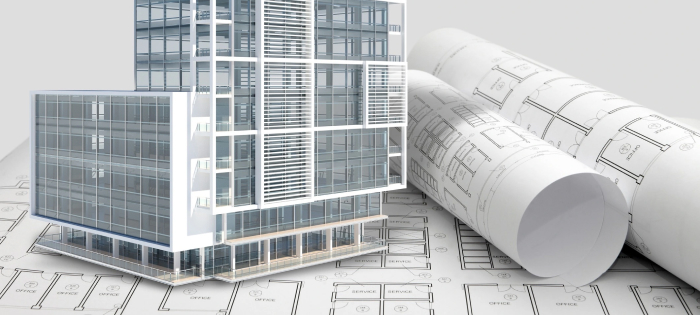
In today's dynamic business landscape, the ability to adapt and scale efficiently is crucial for the success of any organization. Traditional project management approaches often struggle to keep pace with rapidly changing demands and market conditions. Enter architectural outsourcing – a strategic solution that offers flexibility, scalability, and efficiency in project management.
In this blog, we'll delve into the various services offered by architectural outsourcing firms and explore how they contribute to flexible project management.
To comprehend the significance of architectural outsourcing, it's essential to acknowledge the evolution of project management. Traditional models often relied on in-house teams, leading to fixed capacities and potential bottlenecks during periods of high demand. Architectural outsourcing, on the other hand, introduces a paradigm shift, allowing organizations to scale up or down rapidly based on project requirements.
One of the primary advantages of architectural outsourcing is its scalability. Organizations can swiftly scale their project teams up or down, responding to changes in project scope, market conditions, or budget constraints. This adaptability enables efficient resource allocation, ensuring that the right expertise is applied to meet project demands without the burden of maintaining a full-time workforce.
Architectural outsourcing opens the door to a diverse pool of specialized expertise. Companies can tap into external talent pools, gaining access to individuals or teams with specific skills and knowledge that may not be available in-house. Collaborating with industry experts fosters innovation, bringing fresh perspectives and enhanced capabilities to project execution.
Outsourcing specific project tasks translates to cost savings for organizations. Instead of incurring the expenses associated with hiring, training, and retaining a full-time workforce, companies can engage external resources on a project-by-project basis. This not only reduces overhead costs but also allows for more efficient budget allocation, ensuring that financial resources are utilized judiciously.
By outsourcing non-core or ancillary tasks, organizations can redirect internal resources and energy toward core competencies. This streamlined approach not only enhances overall productivity but also accelerates project timelines. The ability to concentrate on strategic initiatives and essential functions positions companies for a competitive advantage in the market.
The design phase is the heartbeat of any architectural project, and 3D rendering services serve as a catalyst for bringing concepts to life. These services empower architects and designers to transform abstract ideas into vivid, detailed visualizations, fostering a deeper understanding of the design intent.
Effective communication is the linchpin of successful project management. 3D renderings act as a universal language, enabling seamless communication among stakeholders. By presenting intricate details with photorealistic precision, architects bridge the gap between their vision and the comprehension of clients, contractors, and team members.
Virtual reality tours have emerged as a dynamic force, reshaping how architectural projects are presented. These immersive experiences allow stakeholders to step into a virtual realm, exploring spaces in unprecedented detail. This not only revolutionizes presentations but also captivates clients and investors by providing an interactive journey through the envisioned project.
In a world where remote collaboration is the new norm, virtual tours act as a spatial bridge. Team members and clients can participate in design reviews and walkthroughs from different corners of the globe, fostering collaboration without the limitations of physical proximity. This not only saves time but also enhances project adaptability.
In a competitive real estate landscape, differentiation is the key to success. 3D renderings and virtual tours elevate property marketing by offering a captivating and immersive experience. Prospective buyers can visualize properties in-depth, transcending the limitations of traditional 2D presentations and gaining a comprehensive understanding of a space's potential.
Buying a property is a significant decision, often requiring a leap of faith. 3D renderings and virtual tours instill confidence in potential buyers by providing a realistic preview of their future space. This visualization not only expedites decision-making but also establishes a stronger connection between clients and their prospective investments.
Architectural outsourcing, especially in the realm of 3D rendering and virtual tours, offers scalability solutions. Whether it's a small design firm or a large-scale real estate developer, these services adapt to fluctuating workloads and project demands. This scalability ensures optimal resource allocation, minimizing overhead costs, and maintaining agility in a dynamic industry.
By outsourcing specialized tasks like 3D rendering and virtual tours, architectural firms can focus on core competencies. This not only streamlines project management but also enhances overall efficiency. The ability to scale resources up or down based on project requirements ensures that teams can tackle diverse challenges with ease.
Before engaging in architectural outsourcing, it is imperative to clearly define project objectives, scope, deliverables, and success criteria. Establishing a shared understanding of project requirements is essential for aligning expectations and facilitating effective collaboration with external partners.
Choosing the right outsourcing partners or vendors is critical for success. Evaluate potential partners based on their expertise, track record, capabilities, and cultural fit. Thorough due diligence, including reference checks, helps ensure a successful partnership that aligns with the organization's goals.
Architectural outsourcing emerges as a strategic approach to project management, offering unparalleled flexibility, scalability, and efficiency in an ever-evolving business landscape. As organizations embrace this innovative approach, they position themselves to thrive amidst constant change, where adaptability is key to sustained growth and competitiveness. With careful planning, clear communication, and the right partners, architectural outsourcing can enhance project management efficiency and drive business success.
© Copyright 2021 SHREEDESIGNTEAM. All Rights Reserved